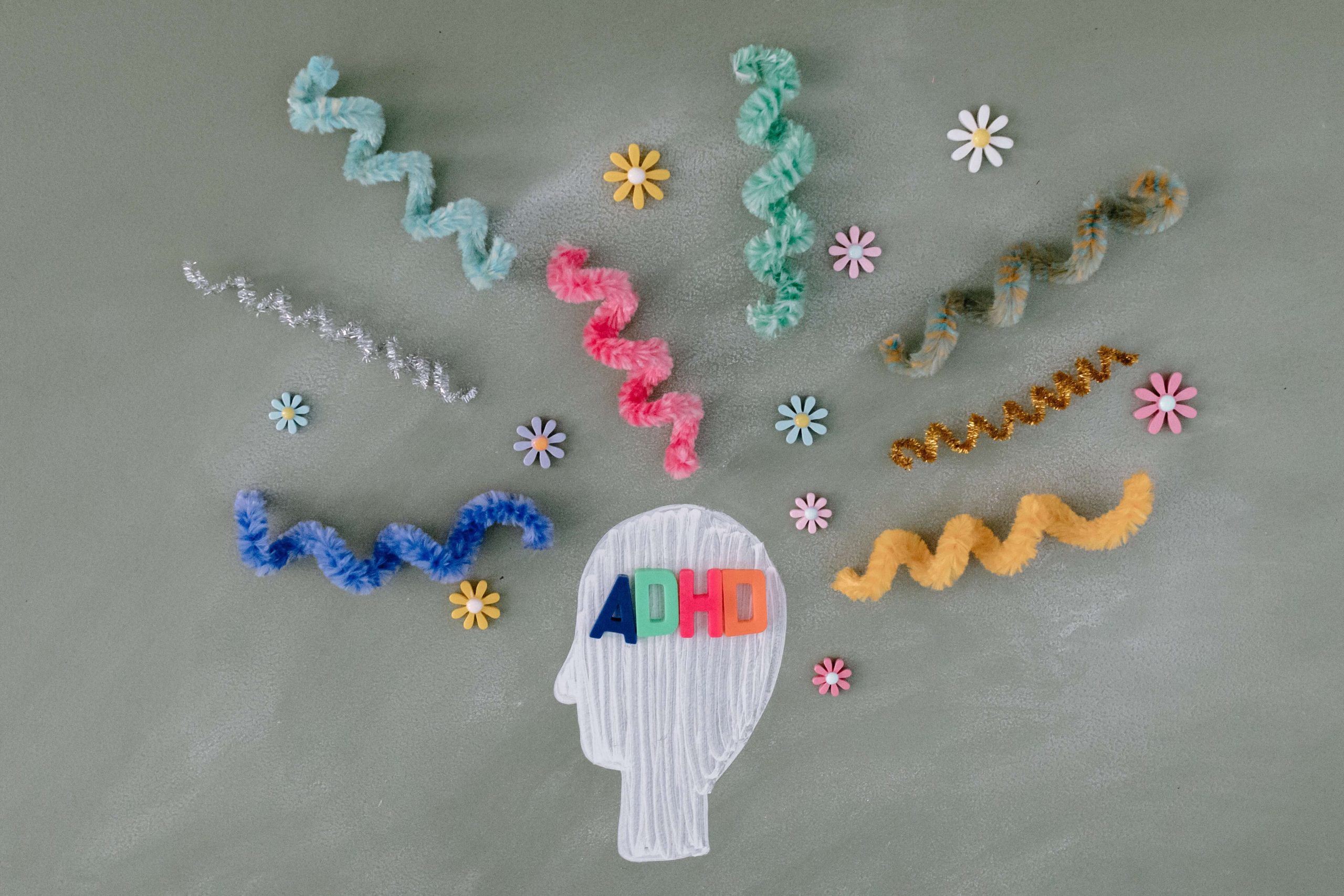What is ADHD in Australia: The Facts
Before we dive into the nuances of what is ADHD – and what is not ADHD, let’s start with some facts about what ADHD is:
✅ ADHD is a form of neurodivergence.
✅ ADHD is a neurological difference that affects the way the brain processes information.
✅ ADHD has three types: Inattentive Type, Hyeractive/Impulsive Type, or Combined Type (both Inattentive and Hyperactive/Impusive symptoms are present).
✅ Around 6-8% of Australian children have ADHD.
✅ Around 3-5% of Australian adults have ADHD, although it’s likely this number is an underestimation.
✅ It has high rates of hereditability, meaning it’s likely that family members may also struggle with ADHD symptoms.
✅ Women are consistently underdiagnosed and under treated.
✅ ADHD can affect the ability to regulate emotions.
✅ ADHD creates differences in executive functioning including working memory challenges.
✅ According to the Diagnostic and Statistical Manual of Mental Disorders (DSM-5-TR), the criteria for an ADHD diagnosis requires symptoms to
- Cause significant impairment in social, school, or work functioning,
- Be present for at least six months, and
- For symptoms to have been present before the age of 12 years.
As a lifelong neurological difference, ADHD has a profound impact on those who are diagnosed, and it can impact the families and loved ones of those with ADHD.
Doesn’t everyone have some ADHD?
When we talk about what ADHD is, you’ve probably joked about your own “squirrel brained” moments of forgetfulness or distractibility.
But let’s be careful not to be dismissive of real, persistant challenges that can cause distress and get in they way of reaching your potential: ADHD is not merely a label to slap on every misplaced key or momentary lapse in attention. As with many psychological constructs, the reality is nuanced. Every person with ADHD will have a unique presentation, and for some, ADHD can be disabling. For others, they may be able to mask many of the symptoms or find ways to structure the environment in order to flourish. If we browse TikTok we migh hear ADHD described as a superpower due to some of the nuances such as hyperfocus. Whilst it is true that some of the features of ADHD can be useful, it’s equally true that many people find them disabling or difficult to manage.
Psychologists use the term functional impairment to describe the limitations or challenges that an individual experiences in performing daily tasks or roles. We consider these by referring to what might be typical, or neuro-typical for a person’s age, cultural background, and societal norms.
What is ADHD?
ADHD is a neurodevelopmental difference in the way the brain processes information. This ADHD neurotype is characterised by persistent patterns of
1️⃣ inattention,
2️⃣ hyperactivity, and
3️⃣ impulsivity
These difficulties with inattention, hyperactivity, and impulsivity can significantly interfere with daily functioning and the ability to complete day to day tasks in ways that may be apparent – or subtle. For this reason, one of the diagnostic criteria used in many mental health diagnoses is that symptoms must be present for a specified time. In the case of ADHD, evidence of impairment from symptoms in childhood is one criteria.
ADHD isn’t limited in it’s impact. Differences in the way information is processed impacts social interactions, academic performance, occupational duties, and self-care activities. The concept of functional impairment is both important, and,in the context of mental health, often subjective and challenging to accurately assess.
Gauging the severity of symptoms which can vary day to day is difficult. Their impact on an individual’s quality of life may be subjective or debated. Highly perfectionistic people may consider minor deficits or frustrations with normal limitations to be disordered.
It’s Complicated, But Let’s Talk About It
There’s a fine line between ordinary quirks and the genuine challenges that ADHD can pose. Let’s consider some commonplace behaviours that people often, but mistakenly, ascribe to ADHD:
Case 1: Your Keys Are Playing Hide and Seek
Common Misconception: Losing your keys occasionally is, dare we say, human? It could happen to anyone juggling life’s myriad responsibilities.
The ADHD Reality: But what if it’s chronic? If you’ve created specific spots for your keys, set up reminders, and you still can’t keep track of them to the point it’s affecting your daily functioning, then it’s not just “one of those things.”
Case 2: When Conversations Turn Into Background Noise
Common Misconception: Missing bits of conversations is typical for anyone living in this era of ceaseless notifications and multitasking.
The ADHD Reality: The distinction here is the frequency and impact. If you’re persistently struggling to retain verbal information, to the detriment of your work or personal relationships, that’s a red flag.
Case 3: You are Late and Disorganised
Common Misconception: Running late, getting muddled and forgetting things is a surprisingly normal human experience.
The ADHD Reality: Again, the distinction here is the frequency and impact, many ADHD’ers stuggle with time blindness, task initiation and planning.
Self-Reflection and Accountability
People with genuine ADHD symptoms find them pervasive, often cutting across different areas of life. So, it’s crucial to separate fleeting instances of forgetfulness or inattention from a pattern that might require professional input. And it’s crucial to check whether the symptoms are coming from ADHD, or from another mental health problem, or stress in the environment.
For example, a child with ADHD may exhibit functional impairment in the school setting by consistently failing to complete assignments, disrupting class, and having difficulty organising tasks. This can result in poor academic performance and strained relationships with teachers and peers, which impairs a child’s typical educational and social development. We would also need to consider whether ADHD is the best, or only explanation for the behaviour. A child being bullied might present similarly. If a child had inattentive features only – common for females – then without any disruptive (hyperactive) behaviours, they may fly under the radar. Girls may be seen as daydreamers and have ADHD missed completely. Being told to ‘try harder” when your brain is already doing it’s best can damage self-esteem.
An adult with ADHD may experience functional impairment at work, struggling with organisational skills, time management, or maintaining focus during meetings. These issues can impact job performance, result in missed deadlines, and affect career progression. But an adult with anxiety, or who is experiencing a marital breakdown, or has significant carer responsibilities might share a similar presentation of symptoms. It may even feel more socially acceptable, and less stigmatising to have a marital breakdown than to have ADHD in the workplace.
Teasing apart what is, and what isn’t ADHD requires careful assessment, and can take some time. If your behaviours are impairing your quality of life and are not merely one-off incidents, then it’s not just about labelling; it’s about understanding yourself and accessing the right strategies for wellbeing.
Assessing ADHD
Attention Deficit Hyperactivity Disorder (ADHD) is a neurodevelopmental condition characterised by differences in brain and cognitive development. ADHD can be difficult to assess because of its overlapping symptoms with other conditions and the general distractions and busyness of modern life.
Here are six questions, taken from the publicly available Adult ADHD Self-Report Scale v1.1 (ASRS), which are considered to screen for symptoms consistent with ADHD.
Answer the following questions as never, rarely, sometimes, often, or very often.
- How often do you have trouble wrapping up the final details of a project, once the challenging parts have been done?
- How often do you have difficulty getting things in order when you have to do a task that requires organisation?
- How often do you have problems remembering appointments or obligations?
- When you have a task that requires a lot of thought, how often do you avoid or delay getting started?
- How often do you fidget or squirm with your hands or feet when you have to sit down for a long time?
- How often do you feel overly active and compelled to do things, like you were driven by a motor?
If you or someone you know can answer ‘often’ or ‘very often‘ to these questions and are experiencing functional impairment in daily life, it might be worth consulting with a GP, Psychologist or Psychiatrist for a thorough assessment. These questions are not definitive diagnostic tools but can serve as an initial gauge to identify symptoms that may warrant further investigation.
How do you know if you have ADHD?
If you notice recurring issues that resonate with ADHD symptoms, listen to that inner voice urging you to explore further.True self-awareness is a mix of self-compassion and accountability, allowing you to hold onto your self-esteem while encouraging constructive action.
For me, as a speaker in the field, and as a Clinical Psychologist, I dislike the D’s of ADHD. There is ongoing stigma attached to a neurological difference when it is labelled as a Disorder and a Deficit. Let go of the words. You’re not flawed; you’re human. If your human quirks are hindering your life quality, it’s worth taking a closer look. In the journey to mental well-being, understanding is the first step. Whether it turns out to be ADHD or not, learning to understand ourselves better always leads to improved mental wellbeing.







